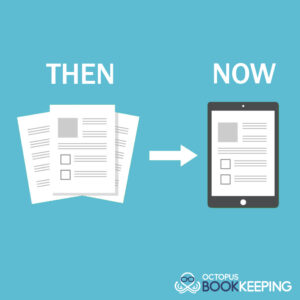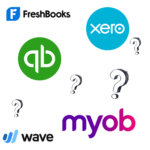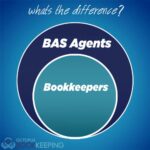What is a Paperless Office?
There is essentially no need for paper in your office if almost all of your documents are stored digitally. As a result, you have a paperless office, as the term implies. A paperless office, often known as a paper-free office, is a workplace that employs mainly digital documents rather than physical paper. A paperless employee has done away with or drastically decreased the use of paper in the workplace. Digitization is the process of transforming paper files into electronic files.
The concept of a paperless office has come into existence since personal computers formed the foundation of the modern workplace. Despite the widespread use of electronic documents and email, the majority of businesses still use paper documents. From meeting handouts to HR onboarding documents to receipts, many business processes are still reliant on hard-copy papers. Going paperless has numerous advantages ranging from saving time, money, and space to increased security and many others.
Advantages of Going Paperless
Saving Time
Time spent filing, sorting, and looking for hard-copy documents could be better spent on other essential duties. All of your digitized documents are kept in central storage by going paperless, which is essentially a well-organized digital filing cabinet.
You’ll be able to use the same sophisticated search capabilities that you’re used to on Google when you use a digital document management system. Employees may now find files with a single mouse click, rather than the time-consuming, manual procedure of looking for a specific file in a hidden folder. Employees might put their extra time to good use by working on revenue-generating projects.
Saves Space
Paper and filing cabinets and storage space for those filing cabinets take up a lot of room. Books and bookshelves take up much space too. Worse, paper keeps building up, frequently faster than it can be sorted and managed. This is especially true in areas where paperwork must be kept for an extended period, such as the financial sector.
You can keep all documents on an on-premises server or in the cloud by digitizing them. A repository’s digital file folders take up far less space than a physical records archive.
Saves Money
Going digital enhances the efficiency of day-to-day business processes, thereby saving you money. In the same time frame, paperless offices can process a larger volume of valuable information with just a few clicks than processing papers in traditional offices.
Moreover, digitization saves money on office supplies and equipment (i.e. paper, printers, ink, postage), file storage space, and employee time spent on paperwork management. Employee time savings are especially beneficial for regulatory audits and high-volume, repetitive procedures like expense reimbursements.
Simplifies Information Transfer
Document management software facilitates the quick and easy process for saving documents. The software allows you to quickly generate digital documents through scanners, mobile capture with a phone or tablet camera or importing any file format (.docx, .pdf, image files). Many major apps, such as Microsoft Office and Adobe Acrobat, offer native plugins that allow you to file documents into your document management system in just one click.
Supports the Environment
The production of paper products emits greenhouse gases, which contribute to deforestation and global warming. Recycling can help mitigate some of the adverse effects on the environment, but only to a certain extent. The majority of paper ends up in a landfill. Also, ink and toners include environmentally harmful volatile chemicals and non-renewable ingredients. It is far more sustainable to eliminate the usage of paper completely by moving toward a paperless office.
Improves Security
Physical papers are difficult to track since reams of paper might be misfiled, lost, or destroyed without anybody realizing it. It can also be challenging to keep track of who has access to sensitive files, who prints them, and who copies them. Advanced security capabilities in document management software can address these issues. Granular access controls, which sets access permissions at various levels such as the document level (e.g. based on document type), user-level (e.g. based on job function), or system level (e.g. based on overarching security on the entire data or system), can be set up by system administrators. Access rights aren’t the only security benefit of a paperless workplace. Organizations can also use document management software to use electronic signatures, redact private information, generate audit trails, and more.
Digitizing Paper-Based Procedures
It’s tough to recall how things used to be done because technology has smoothly supplanted paper processes. In almost every situation, the transition from paper-based to electronic-based things is immensely more efficient.
Then
Paper Documents
- Shuffle paper between persons and departments in a tedious manner.
- It’s challenging to keep track of changes when working on a document with others.
Now
Digital Documents
- Electronic communication between persons and departments that is seamless
- Using the “Track Changes” tool, it’s simple to keep track of changes and add comments.
Then
Mail & Faxes
- Constant upkeep is essential to arrange and locate records, particularly those that are old.
- Access based on document location Susceptible to being misplaced or damaged
Now
- Content and metadata are easily searchable.
- Access from a mobile device or a web browser.
- Archived indefinitely.
- Even if a file is deleted, it is possible to recover it.
Then
Encyclopedias & Dictionaries
- It takes time to look up terms and subjects one by one.
- All data is kept in the book’s volumes.
- Limited access from wherever the book is at the time.
Now
Internet
- The search function provides instant access to information.
- Ability to store, copy, and bookmark the information for future use.
- Internet access from anywhere
Then
Newspapers, Books & Magazines
- Information soon becomes obsolete.
- The message is bound by the number of words and the number of pages.
- The news cycle and redaction time are slow.
- Each new book necessitates more storage space.
Now
Media Websites & eBooks
- Content is available right away.
- The amount of space available does not dictate the message.
- Real-time updates and revisions, as well as a 24-hour news cycle.
- A compact e-reader can store multiple books and magazines.
Then
Printed Maps
- There’s no way to account for traffic, road closures, and other roadblocks.
- It wears out quickly and is inconvenient to use while driving.
- Becomes outdated
Now
Waze, Google Maps & Navigation Devices
- Responds to traffic to enhance route efficiency and provide an accurate arrival time estimate.
- Confined to a mobile device.
- Regularly updated to ensure proper navigation
Then
Business Cards & Rolodexes
- Business cards accumulate and are misplaced.
- A Rolodex must be updated manually.
Now
Contacts Synced
- Contacts are stored in both the email application and the mobile phone app.
- Contact information updates are immediately synced across devices.
The Digital Transformation Roadmap
Deciding to go paperless is part of a more critical process known as digital transformation. To entirely digitize your workplace, Laserfiche has identified five crucial measures, as follows:
- Digitize: convert all paper documents to digital
- Organize: Sort documents into categories in a centralized electronic filing cabinet.
- Automate: digitize corporate processes through forms and workflow
- Streamline: examine company processes at a high level to find bottlenecks and potential for increased efficiency
- Transform: Using advanced analytics, you can turn data into insights into improving your company’s efficiency.
Document management software is an essential instrument in the digital transformation process. Beyond the immediate advantages of going paperless, digitization is the first step toward transforming your workplace and, ultimately, propelling your company forward.







